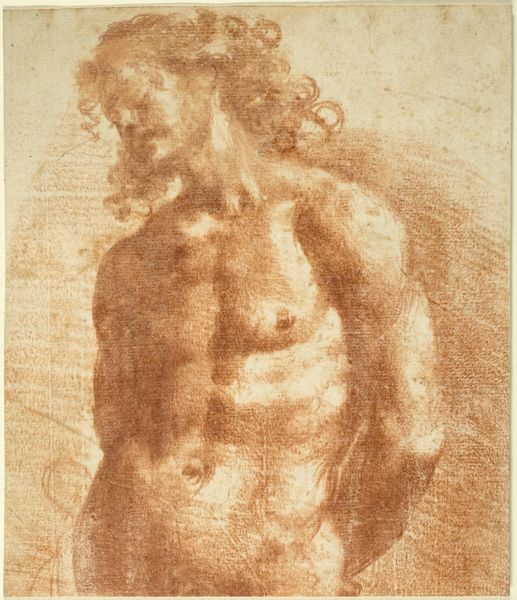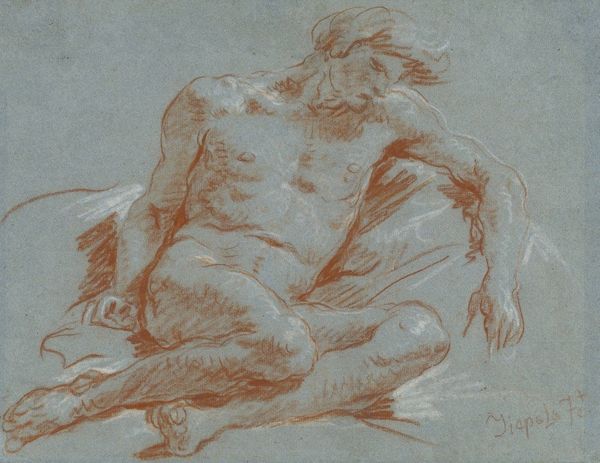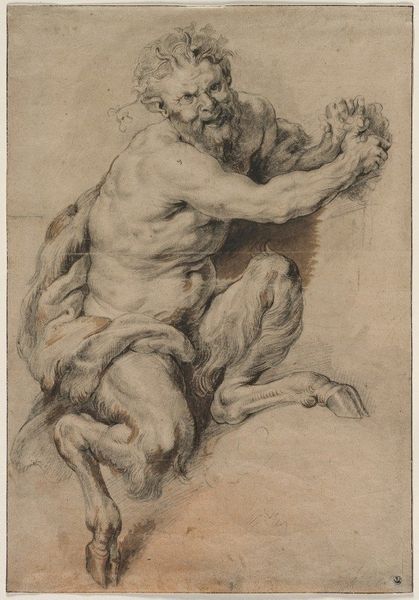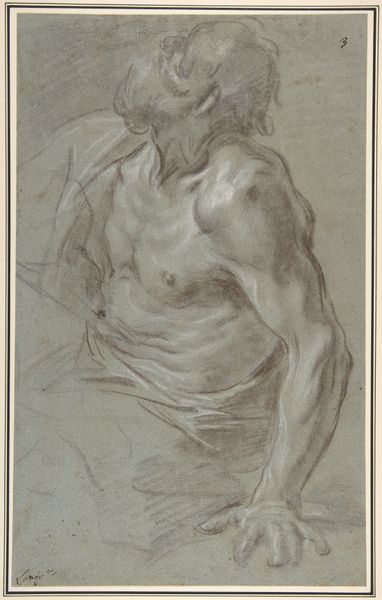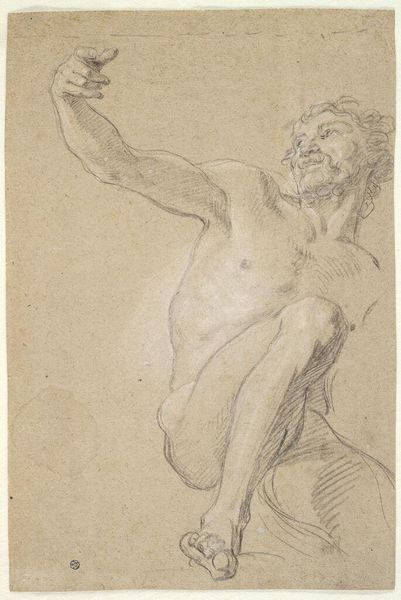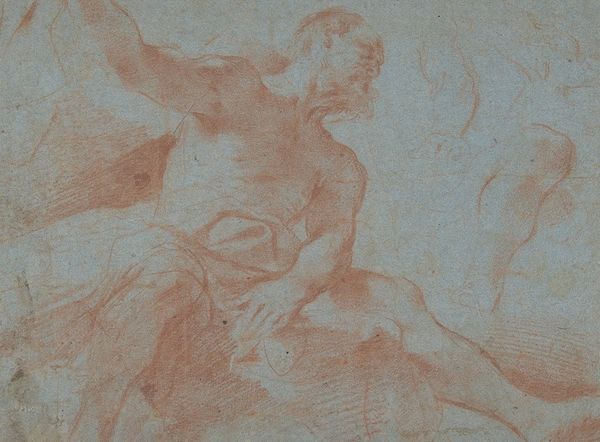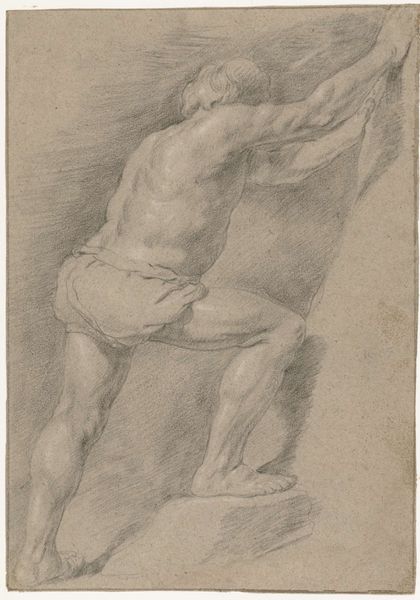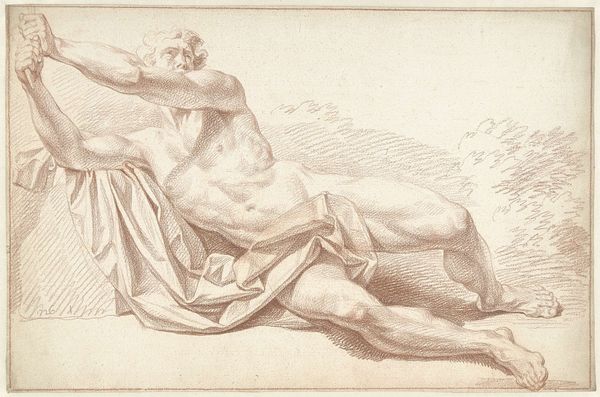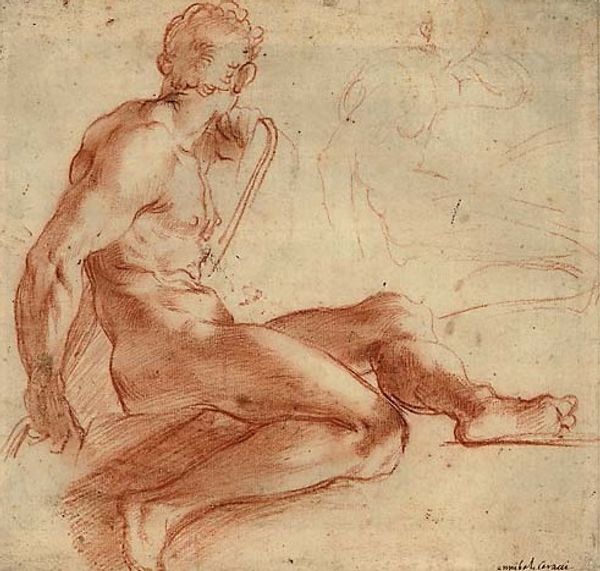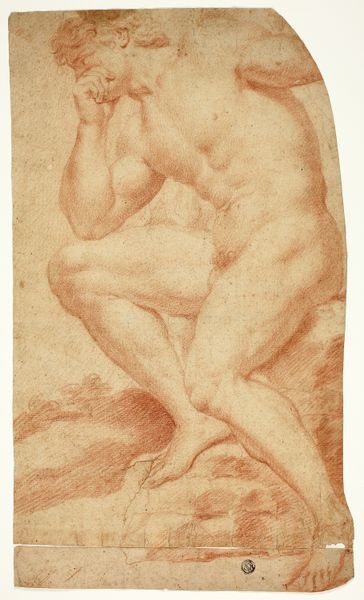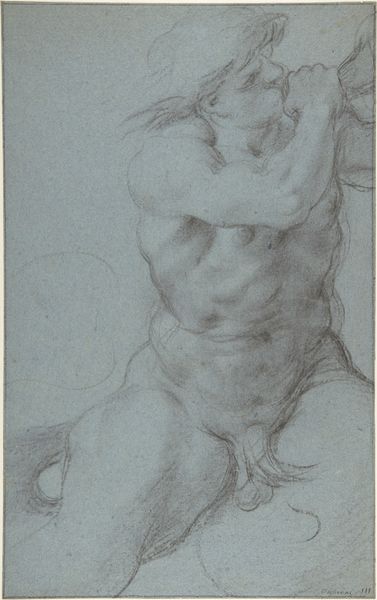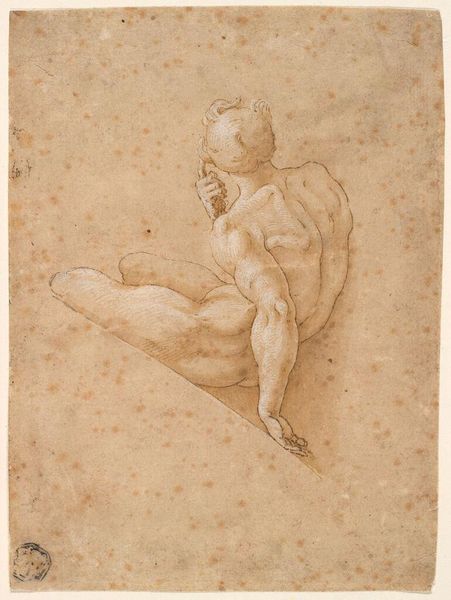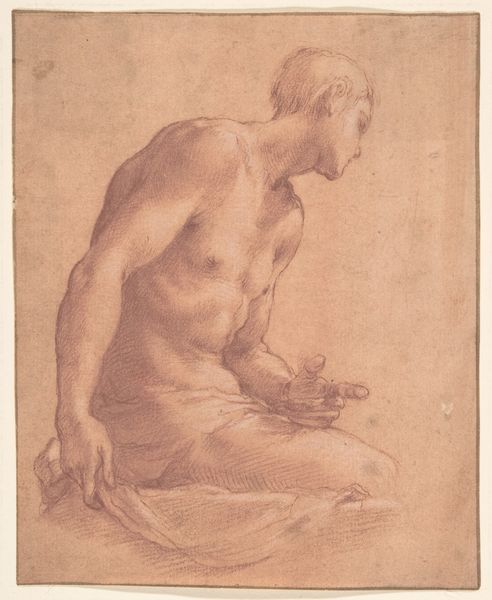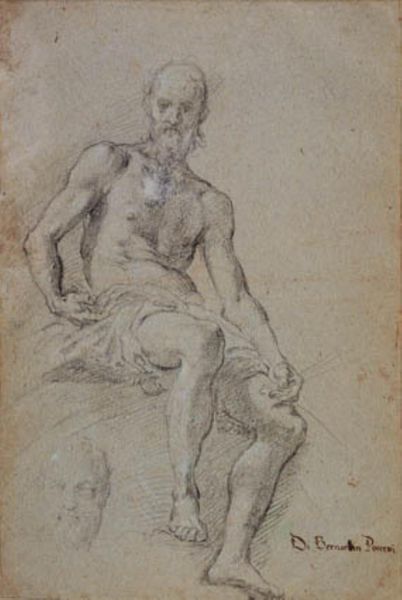
drawing, dry-media
#
drawing
#
baroque
#
figuration
#
dry-media
#
pencil drawing
#
nude
Copyright: Public Domain: Artvee
Editor: Here we have Giovanni Battista Tiepolo's "Male Nude Leaning on His Elbow," created around 1752. It's a delicate drawing in red chalk that strikes me as both classical and a little vulnerable. How do you read this particular work? Curator: I see this piece as situated within a complex dialogue around the male body, power, and representation in the 18th century. Consider the historical context: the Enlightenment's emphasis on reason intersected with ongoing social hierarchies and patriarchal structures. How might this pose reflect the anxieties around masculinity during that period? Editor: Anxieties? I wouldn’t have considered that. He seems relaxed, almost nonchalant. Curator: Perhaps, but consider the pose. He's reclining, vulnerable, gazing upwards—not asserting dominance. His nudity, while classical in style, departs from the heroic male nudes that came before. In looking at these nude figure drawings it's important to examine how these images play a part in establishing norms of male and female representation that ultimately reinforce social stratifications based on sex, gender, and sexuality. What social expectations or norms do you think this subverts, or perhaps, reinforces? Editor: I see what you mean. Maybe the contrapposto is a little… hesitant? Less about bravado and more about contemplation. It’s as if Tiepolo is questioning, rather than asserting, ideal masculinity. Curator: Precisely. And by unsettling those conventions, what kind of space does that open for us as viewers today, especially considering contemporary debates about gender and representation? Editor: I guess it invites us to unpack those expectations, see how they’ve been constructed, and think critically about their impact. It's more relevant now than I first thought! Curator: Indeed. It underscores the enduring power of art to both reflect and challenge our understanding of ourselves and society.
Comments
No comments
Be the first to comment and join the conversation on the ultimate creative platform.
